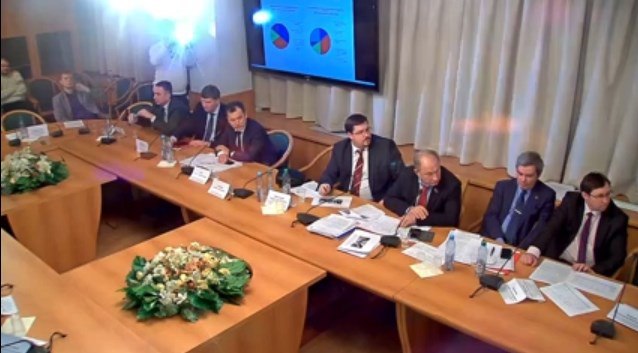We decided to put things in order in the configuration of the UT 11 version. And there ... The remnants of goods do not converge with the remnants of organizations (several organizations are used), but with lots of goods they don’t stand so close at all, and commission trading is used along with regular trading. In short, everything is so neglected that it’s easier to start from scratch, BUT ... You can’t start from scratch - a bunch with enterprise accounting 3.0 (directories, documents), and there reporting has already been submitted. We decided so, in bookkeeping we separately establish order, in UT separately. Specifically for UT, they decided: everything related to goods (goods in a warehouse, goods of organizations, lots of goods of organizations, plus registers related to a commission) is nullified, then we make a fictitious arrival (including to a commission), and we correct the mutual settlements by adjusting the mutual settlements. At first I began to write processing for specific registers, while I was writing, I thought it would be universal to write about the same amount of time, but it would do for all registers so that I would not rewrite it ten times later. It should also be suitable for Retail 2, Integrated and other configurations for managed forms. Tested on UT11.
How to use. First, we manually create an empty document "register adjustment", set the date and time (I set 23:59:59 at the end of the quarter), the rest of the registers will be taken to this position (document position), in general, we only have the position from the document and need it. Then we select which registers we need to zero and click "Form." We open the adjustment, look, check the registers with the help of reports and / or a universal report. The balances are closed across all dimensions and all resources. Also in the form there is a selection by organization and warehouse (atavism from the original version, but it works) I didn’t add other selections (since I didn’t need it at all), who you need to add yourself, everything is clearly written in the module, but not He began to apply because, for example, if an organization is selected, then the selection for the Register "Organizational Goods" will work, but for the "Goods in Warehouses" no (there is no such measurement), therefore it vanished without selection.
Some time has passed...
A new version was released, now the processing has learned (it used to give an error - that is, it actually worked only with balance registers) to reverse the movement of the reverse accumulation register. Moreover, the movements are reversed, i.e. if you look at the register, say, “Sales” in UT11, then after reversing sales will not show at all, i.e. as if there were no sales at all - the turnover as a whole for the period will be empty. Once again - it turns out, for example, we had sales for the period January 1-30, on the 31st I make reversals, after that if I look at the report from 1 to 30 I will see sales, from 31 to 31 I will see reversal movements, from 1- 31 - empty show. For example, I reversed the movement of the register "Cash" in UT11 and Retail 2.2 when I had to put in order the "Cashier" (50 account who understands).
Yes, I forgot to say, the "Start Date" field appeared - it is used to set the start date of the period for negotiable registers (of course, it doesn’t apply for balances), the position of the document "Register Adjustment" is used as the end date of the period (for negotiable registers) - i.e. . as for the balance of balances (balances are removed at the position of the document). For negotiable registers, the “DateStart” can remain empty - in this case, it is perceived as the earliest date that can be, and for a negotiable register it will mean that all movements are reversed from the start of accounting for the position of the document “Correction of Registers”.
Good news - the cost in points has decreased.
Learning to work with registers (1C: Accounting 8.3, revision 3.0)
2016-12-08T13: 50: 45 + 00: 00Dear readers, in this lesson I want to touch upon an extremely important topic when working in 1C: Accounting 8.3 - Registers.
Immediately I will show you with a small example why this is so important.
Suppose we have payroll for January:

In early February, we create a payroll sheet from the cash desk and click on the "Fill" button:

And we get the following:

But for January:
- Charge of 50,000 rubles
- Personal income tax 6 500 rubles
- Total payable 43 500 rubles
Where the error crept in? Something went wrong? Is it now always possible to enter the amount payable manually?
An experienced accountant will immediately make a balance sheet for 70 accounts:

And it will be even more perplexed, because according to the report, the same 43,500 are coming out for payment! And where did the extra 5,000 rubles come from?
Moreover, such a situation (with any calculations) can occur both in the “troika” and in the “deuce”.
Today I will try to open the veil of secrecy - why is it that sometimes a program behaves so strangely. I will tell you how to find and fix the error in such cases. Towards the end of the article, we’ll figure out where these 5,000 rubles came from.
So let's go!
Learning to see registers
When conducting documents 1C: Accounting 8 makes entries in the accounts (DtKt button for any document):

It is on the basis of these postings that all accounting reports are built: Account Analysis, Account Card, Balance Sheet ...
But there is a huge layer of data that is written by the program in parallel with postings and is used for everything else: filling out KUDIR, a book of purchases and sales, regulated reporting ... payroll payable, finally
As you may have guessed, this layer is called registers, there he is:

I will not go into details of the description of the registers themselves now, so as not to confuse you even more.
I can only say that it is vitally important for us to gradually learn to “see” movements in these registers in order to better understand and, when necessary, adjust the program’s behavior.Let's take a closer look at the Salary to Pay register - it makes sense to solve our problem with an extra 5,000:

We see two entries on this register made in the parish, that is, in plus. If you scroll the screen to the right, we will see in the first line the amount payable "-6,500", and in the second "50,000".
The balance of this register -6,500 + 50,000 is equal to 43,500, which should be included in the document "Statement of payment from the cash desk" when we click on the "Fill" button.
I repeat again - the payroll sheet does not determine our payroll arrears to the employee not according to the 70th account, but according to the Salary to Pay register.
It turns out we know that the salary to be paid is filled on the basis of this register, but even seeing the register entries we can’t understand what is wrong.
Most likely, we do not see the whole picture (maybe there are other entries on this register), and some tool for analyzing the register is similar to accounting reports.
Learning to analyze registers
And there’s such a tool, it’s called " Universal Report".
Go to the "Reports" section of the "Universal Report" item:

Choose the type of register "Register of accumulation", the register "Salary to pay" and click the button "Generate":
It turned out not very informative:

That's because the report needs to be pre-configured, click the "Show settings" button and add the "Employee" field on the "Grouping" tab:

On the tab "Selection" we make a selection for our organization:

Click the "Generate" button:

This is already more interesting. We see the balance payable to our employee the same 48 500 rubles!
Again, go to the report settings and add to the tab “Indicators” a new field “Registrar”:

We again generate a report:

Now we can clearly see that 5,000 appeared as a result of the operation (apparently entering the balances) on December 31, 2014.
And we need to either change this operation, or manually adjust the Salary to Pay register and close these 5,000 rubles, for example, on December 31, 2015.
Let's go the second way. So, our task is to make sure that at the beginning of 2016, according to the Salary to Pay register, there is no our debt to the employee.
This is done by manual operation.
Learning to adjust registers
Go to the "Operations" section of the "Manual Entries" item:

We are creating a new operation at the end of 2015:

From the "More" menu, select the "Select Registers ..." item:

Specify the register "Salary payable" and click OK:

Go to the bookmark of the register that appears and make an expense of 5,000 rubles:
Thus, we seem to subtract 5,000 rubles per employee from the register in order to reach zero by the beginning of 2016.
We carry out the operation and re-generate a universal report:

Everything worked out! We see that our manual operation dated 12/31/2015 brought the remainder to zero and the salary payable after accrual is equal to the expected 43,500.
Wonderful. And now we will check this in the payroll sheet.
But first, I want to draw your attention to another important point:

Please note that the balances at the beginning and at the end of the grouping "Employee" show nonsense. This is not a mistake at all, it is a nuance to be taken into account related to the architectural features of 1s.
Remember. In the event that a universal report is displayed with details to a document (registrar) - the rest by grouping will show nonsense.If we need balances by employee grouping, we must first remove the “Registrar” indicator we added from the settings.
We decided to put things in order in the configuration of the UT 11 version. And there ... The remnants of goods do not converge with the remnants of organizations (several organizations are used), but with lots of goods they don’t stand so close at all, and commission trading is used along with regular trading. In short, everything is so neglected that it’s easier to start from scratch, BUT ... You can’t start from scratch - a bunch with enterprise accounting 3.0 (directories, documents), and there reporting has already been submitted. We decided so, in bookkeeping we separately establish order, in UT separately. Specifically for UT, they decided: everything related to goods (goods in a warehouse, goods of organizations, lots of goods of organizations, plus registers related to a commission) is nullified, then we make a fictitious arrival (including to a commission), and we correct the mutual settlements by adjusting the mutual settlements. At first I began to write processing for specific registers, while I was writing, I thought it would be universal to write about the same amount of time, but it would do for all registers so that I would not rewrite it ten times later. It should also be suitable for Retail 2, Integrated and other configurations for managed forms. Tested on UT11.
How to use. First, we manually create an empty document "register adjustment", set the date and time (I set 23:59:59 at the end of the quarter), the rest of the registers will be taken to this position (document position), in general, we only have the position from the document and need it. Then we select which registers we need to zero and click "Form." We open the adjustment, look, check the registers with the help of reports and / or a universal report. The balances are closed across all dimensions and all resources. Also in the form there is a selection by organization and warehouse (atavism from the original version, but it works) I didn’t add other selections (since I didn’t need it at all), who you need to add yourself, everything is clearly written in the module, but not He began to apply because, for example, if an organization is selected, then the selection for the Register "Organizational Goods" will work, but for the "Goods in Warehouses" no (there is no such measurement), therefore it vanished without selection.
Some time has passed...
A new version was released, now the processing has learned (it used to give an error - that is, it actually worked only with balance registers) to reverse the movement of the reverse accumulation register. Moreover, the movements are reversed, i.e. if you look at the register, say, “Sales” in UT11, then after reversing sales will not show at all, i.e. as if there were no sales at all - the turnover as a whole for the period will be empty. Once again - it turns out, for example, we had sales for the period January 1-30, on the 31st I make reversals, after that if I look at the report from 1 to 30 I will see sales, from 31 to 31 I will see reversal movements, from 1- 31 - empty show. For example, I reversed the movement of the register "Cash" in UT11 and Retail 2.2 when I had to put in order the "Cashier" (50 account who understands).
Yes, I forgot to say, the "Start Date" field appeared - it is used to set the start date of the period for negotiable registers (of course, it doesn’t apply for balances), the position of the document "Register Adjustment" is used as the end date of the period (for negotiable registers) - i.e. . as for the balance of balances (balances are removed at the position of the document). For negotiable registers, the “DateStart” can remain empty - in this case, it is perceived as the earliest date that can be, and for a negotiable register it will mean that all movements are reversed from the start of accounting for the position of the document “Correction of Registers”.
Good news - the cost in points has decreased.
There are situations when, when calculating a service with the calculation method “Based on meter readings”, one indication is entered, and when charging the service, the expense is completely different. Such situations may arise in cases where the user manually changes the data in the documents “Entering meter readings” and “Charging services”. Consider an example.
- We introduce the meter reading for the Hot Water Supply service for January:
- We calculate the service:

In this case, the calculation was correct.
To store consumption for metering devices, the accumulation register “Calculation of metering devices” is used. Open this register using the menu "Operations - Accumulation registers - Calculation of metering devices." The register can also be opened from the documents “Entering meter readings” or “Charging services” using the button “Go - Calculation of metering devices”.
Set in the accumulation register selection on the personal account and service:


It can be seen in the register that the expense in the document “Charging services” for the month of January corresponds to the indication entered by the document “Entering meter readings” for the same month. For the correct calculation, the flow rate must correspond to the entered indications in each month.
- Open the document “Entering meter readings” for January and manually change the entered reading:

At the same time, we will not re-fill the document “Charging Services” for January.
- Enter the meter reading for February:

- Let's calculate the service for February:

It can be seen that the wrong expense fell into the document. Open the accumulation register “Calculation of metering devices” and set the selection for the personal account and service:

The register shows that the entered indications and expenses do not correspond to each other.
In this example, you can of course re-fill and re-transfer the documents “Charging Services”, but this is a simple example, in reality there can be a lot of documents, re-filling can only worsen the situation.
In this case, it is necessary to use the processing "AOB_Reset of Residues of the Accumulation Register".
NOTE: It is recommended that you back up the infobase before using processing.
To correct the situation, we will perform the following actions:
1. In the “1C: Enterprise” mode, we open the processing “AOB_Reset of Residues of the Accumulation Register” using the menu “File - Open”;
2. In the “Traffic document” field, select the document “Charging services” for January.
NOTE: the document is selected prior to the document in which you want to get the correct data. In this case, we will correct the document “Charging Services” for February, therefore, the document “Charging Services” for January is selected as the document of movement.
3. In the field "Register zeroing" select the register "Calculation of metering devices":

NOTE: residue processing is possible in processing. Selection criteria are configured in the table.
4. Click on the “Run” button.
When this button is pressed, the data in the accumulation register “Calculation of metering devices” will not change visually, but the balances will be reset to zero.
5. We re-fill the document “Charging Services” for February:

It is seen that after using the processing, the calculation has become correct.
Incorrect values \u200b\u200bin the accumulation register “Calculation of metering devices” can also be formed as a result of manually changing the data in the document “Charging services”, or entering several documents “Entering meter readings” or “Charging services” for the period.











Learning environment: new projects A typical project of a school with 825 seats
A catalog of typical projects of social infrastructure buildings has been created in the Moscow region
A catalog of typical projects of social infrastructure buildings has been created in the Moscow region
Turnkey Cottage Construction Roadmap
The report of the head of the Ministry of Construction of Russia Mikhail I at a meeting of the Commission under the President of the Russian Federation on monitoring the achievement of targets of socio-economic development of the Russian Federation